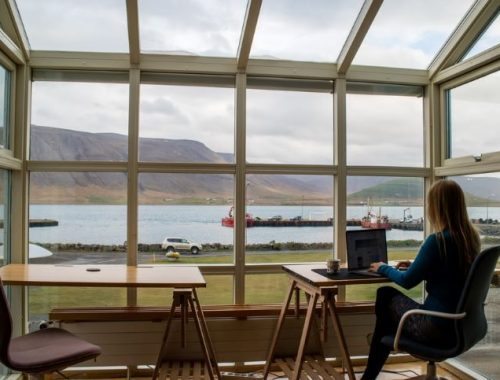Geographical Location And Boundaries Of India
India is one the oldest civilizations on the planet. The country has seen multi-faceted socioeconomic growth over the past 50 years. It has made remarkable advancements in agriculture, technology, and overall economic development. India is also a significant contributor to world history.
The country lies between latitude 4 and 37deg6N, and longitude 68deg7E to 97deg25E.
Indira, in Great Nicobar Island’s southernmost region, is located at 6deg45. Kanyakumari is found on the Indian mainland’s southernmost tip. This country is therefore entirely in the eastern and northern hemispheres.
The Standard Time Meridian of India (from Naini in the vicinity of Allahabad) is the 82deg30 E.
India spans 3,214 km North-South and 2,933 km East-West.
The total area of India is 32,87,263 square kilometers. km. This area covers 2.4% of all the world’s total surface and approximately 16% percent of the world’s population.
India’s coastline measures approximately 6,100 km. The coastline extends to 7516.6km, including the Andaman and Nicobar Islands.
India accounts for a third of all landmass.
Roughly four out of every ten square miles of land is classified as plains geography.
Plateaus: 27.7%
Hills: 18.6%
Geography of the Mountains: 10.7%
On the east side of India, you will find the Gulf of Mannar and the Palk Strait.
Total land neighbours: 7 (Pakistan Afghanistan China Nepal Bhutan Bangladesh Bangladesh Pakistan and Afghanistan China Nepal Bhutan Nepal Bhutan Bhutan Bangladesh India Myanmar
India’s Islands are the Andaman & Nicbar Islands in Bay of Bengal as well as the Minicoy & Aminidive Islands of the Arabian Sea.
The Indian Landmass is located between East Asia and West Asia. India is a Southward Extension of the Asian Continent. India is strategically located at the center of the Trans Indian Ocean routes, which link the countries in Europe and East Asia. You will notice that the Deccan Peninsula protrudes into India’s Indian Ocean. This helps India establish close contact from the east coast with Southeast Asia, East Asia, Africa, West Asia, and Europe. India is the only country with a long coastline in the Indian Ocean. It has been there for centuries, but her land-based relationships are more important than her maritime connections. These passes have opened up new routes for ancient travelers to reach the north. The oceans had long prevented such interaction. Since ancient times, these routes have helped facilitate the exchange of ideas as well as commodities. Ideas such as the Ramayana and the Upanishads, stories like Panchtantra, Indian numerals, and decimal system could be shared with many countries. India exported spices, muslins and other merchandise. However, you can still see the influence and architecture styles of West Asia’s dome and minarets in different areas of the country.
India’s Neighbours in South Asia and Its Position ThereIndia is a key strategic player in South Asia. India is home to 29 states and seven Union Territories. India shares its land borders with Pakistan, Afghanistan and China in the northwest, China(Tibet), Nepal, Bhutan and Myanmar in the east and Bangladesh in both the northeast. Our seaward neighbors are the Maldives and Sri Lanka. Sri Lanka and India are separated by narrow channels of ocean formed by the Palk Strait (and the Gulf of Mannar), while the Maldives Islands lie to the south of Lakshadweep Islands.
India has strong historical and geographical links with its neighbors. You can see India’s physical location on the Asia atlas.
The middle of the country is divided by the Tropic of Cancer, which passes through it. The area north of Tropic Cancer is almost twice that of the region to its south. The country, which is located south of 22deg nord latitude, tapers off to the Indian Ocean as an island.
In 24 hours, the earth rotates 360deg around its axis. Therefore, a difference in 1deg longitude can result in a difference between 4 and 6 minutes of time. The difference in local time between the western-most and eastern-most points is therefore 30 x 4, or 120 minutes, or 2 hours.
The area of the temperate region (north of Tropic of Cancer), covers twice as much land as that of the tropical portion.
India has been considered a tropical country since its inception for two reasons: cultural and physical.
The Himalayas separate the country from Asia.
The tropical monsoons dominate the climate, while the Himalayas block the temperature.
From a climate perspective, the entire region south of the Himalayas appears tropical: Night temperatures in North India can drop to about the same level as those found in temperate countries. However, the day temperatures are still high thanks to clear skies and intense sunshine.
All tropical activities include primary and secondary economic activities, as well as settlements, diseases, and agricultural production.
India is a tropical nation primarily due to the Himalayas.
India has 15106.7 Km land border crossing through 92 Districts in 17 States. The coastline is 7516.6 Km [6100km coastline + coastline of 1197 Indian Islands] which touches 13 States as well as Union Territories.
Apart from Madhya Pradesh. Jharkhand. Delhi. Haryana. Telangana. All other States in the country have an international border or coastline. These can be considered frontline countries for border management.
India has a long border with BANGLADESH, while Afghanistan has a shorter border.
Below are the dimensions of India’s borders with other countries.
Data taken from the Ministry of Home Affairs (Department of Border Management).
This is India’s second-longest border, after that with Bangladesh.
Five Indian states, including Jammu and Kashmir (Himachal Pradesh), Himachal Pradesh and Uttarakhand), touch the Indian border with China.
The Sino/Indian border is usually divided into three sectors: (i), Western Sector, (ii), Central Sector, and (iii), Eastern Sector.
Separates Jammu and Kashmir from the Sinkiang province (Xinjiang).
The British policy against Jammu Kashmir is partly responsible for the western sector border.
China claims the Aksaichin district, Pangong Tso’s Sponggar Tso region of north east Ladakh and the Changmo Tso valley. A strip of approximately 5,000 sq km runs along the entire length Eastern Ladakh. China also claims part of Huza Gilgit in North Kashmir, which was ceded by Pakistan in 1963.
This border is shared between Uttarakhand (India) and Himachal Pradesh (India).
The 1,140 km-long boundary between India & China runs from Bhutan’s Eastern Limit to Talu-Pass at India’s Trijunction of Tibet, India, and Myanmar.
This line is also known as the Mc Mahon Line. It was named after Sir Henry Mc Mahon (1913-14), British India’s foreign secretary.
Five Indian states, Uttarakhand, Uttar Pradesh and Bihar, as well as West Bengal and Sikkim are at the border with India. The border is open and allows people and goods to freely move between Nepal and India.
Large portion of Indo–Nepalee border runs east to west almost all the way along the Shiwalik Range’s foothill.
They have a friendly border and no dispute about the boundary.
The Indo Pakistani border was created by the 1947 partition of Pakistan under the Radcliffe decision, of which Sir Cyril Radcliffe was chairman. Jammu & Kashmir, Sir Creek and other disputed areas are also included.
The longest border between India and Bangladesh measures 4,096 km.
The Radcliffe Award has divided Bengal’s former province into two distinct parts.
The boundary is roughly located between the Brahmaputra [Irrawaddy] and Ayeyarwady. It passes through densely forested areas, with Mizo Hills in India, Nagaland and Manipur on one side and Chin Hills Naga Hills and Kachin State on the Myanmar other.
India and Sri Lanka are separated by the narrow, shallow ocean known as Palk Strait.
Dhanushkodi in India’s Tamil Nadu coast is just 32 kilometers from Talaimanar on Sri Lanka’s Jaffna peninsula. A group of islets joins these two points to form Adam’s Bridge.


